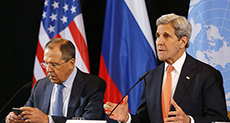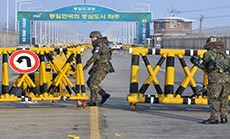DIARY OF RESISTANCE OPERATIONS – JULY 1998

Islamic Resistance Performs 74 Operations in July 1998
This July, the Lebanese resistance squadrons performed 107 military operations against the occupation forces and the Lahd militiamen. The Islamic Resistance performed 74, and the Amal Movement 14. For their part, the Lebanese Brigades for Resisting the Occupation increased their operations to 15, and "the Cyclone Organization" performed 3. On July 31, 1998, agent Nabil Eskandar and his sister were immediately killed as an explosive hit their car on Roum-Annan Route. No side declared responsibility for the operation, however.
The Islamic-Resistance operations killed an "Israeli" soldier and wounded 8 others, also killed 2 Lahd militiamen and wounded 5 others, acknowledged the enemy. A third militiaman was killed during an operation by the Lebanese Brigades for Resisting the Occupation, and a fourth was killed by a blast while he was on Roum-Annan Route.
On the other hand, 1 Islamic-Resistance fighter was martyred this month.
Militarily, "Maarif" reported former Zionist Chief of Staff Emanon Shahak made ratification to Prosecutor General Auri Shoham to form a committee headed by "Israeli" officers of the disciplinary and deputy service. The committee was supposed to reinvestigate into the foiled Ansariyeh airdrop, during which 12 marine commandoes of "Shayetet 13" were killed.
Resistance Fighters Break Into Haddatha Site, July 2, 1998
On July 2, 1998, the Islamic-Resistance fighters carried out a massive attack against 18 Zionist-Lahd sites. The fighters commenced their operations at dawn, breaking into Haddatha Site after penetrating the 75-meter-wide mine fields surrounding the site. Completely dominating the site, the fighters posted Hizbullah standards onto the mounds and inner fortifications of the site. The standards remained posted for more than two hours after the confrontations.
The attack concurred with a massive series of attacks against the Zionist and Lahd sites of Braachit, al-Jamoussa (headquarters of Lahd "Battalion 80"), ad-Dabsheh, Bir Kallab, Sojod, Aramta, al-Qal'a, Teir Harfa, Blat, ath-Thaheera, al-Ahmadieh, Mash'aroun, as well as the new Marj Houla Site, the old Beit Yahoun Site, the new Beit Yahoun Site, and the headquarters of the Zionist-Lahd "West Brigade" in Bint Jbeil.
Not before an hour of confrontations could the enemy's aircraft interfere. The aircraft, however, were confronted with the ground antiaircraft artillery of the Islamic Resistance, and they could not reinforce the sites attacked.
Significant during the confrontations was the complete dominance of the Islamic-Resistance Tank Sniping Unit; the tanks were unable to interfere with the confrontations.
In fact, the operations have again refuted claims of occupation commanders as to the "accuracy" and "quickness" of coordination between the enemy's ground and air forces.
Trying to conceal the fighters' victory, "the Department of Media and Orientation" of the Lahd Militia claimed the Islamic Resistance had unsuccessfully tried to break into Haddatha Site, also that the fighters had only reached the outer site mounds.
Next day, however, "al-Manar Television" displayed a detailed video tape; the fighters appeared breaking into the very site and completely dominating it.
Zionist sources acknowledged that the operations had taken place; also that the fighters had indeed broken into Haddatha Site and seized some equipment before leaving. Lahd militiaman Hafez as-Sagheer (from Bint Jbeil), an "Israeli" soldier, and an officer were wounded; the wounds of the officer were serious, the sources as well acknowledged.
On the other hand, one Islamic-Resistance fighter, Hadi Mshaymish, was martyred.
Now that the Islamic Resistance displayed the video tapes exposing the confrontations, the correspondent of the Zionist military channel said, "The condition of our military forces and of the Lahd Militia has been reconsidered. A Hizbullah fighter stood straight onto the ruins of the site! Lying in front of him was Hizbullah's standard! They're doing it quite confidently as they wish to imply they're facing no problems at all! This is a new operation documented, and it has been planned very carefully."
Chief of "the North Command" Amiram Levin made another statement, "The operation timing hasn't been casual; they have concentrated their efforts and waited until the end of the swap. They've wished to eternize Hadi Nasrallah's memory."
Earlier, military sources in the occupied region had pointed out, "Hizbullah fighters had performed a significant cover-up operation, opening their barrage on all "Israeli" military sites."
Hizbullah Secretary General His Eminence Sayyed Hassan Nasrallah honored the members of the special-force and of the Fire Backup Unit, who performed the unique "operation Haddatha". His Eminence as well offered them "al-Hadi Trophy", and he praised the military-media cameramen for their efforts. "Your films do overwhelm the occupation forces and inspire our nation," Sayyed Nasrallah addressed them.
Operation Kfartibnit, July 6, 1998
On July 6, 1998, the Islamic-Resistance blasted a Lahd force near Kfartibnit Crossing Point, causing casualties to all force members. The Lahd Militia acknowledged agent Ghazi Hashem, Salam al-Manawi, and one more of the Daher family were wounded. All three from Shebaa, they were transported to "Ram Bam Hospital" in Haifa, the Lahd Militia acknowledged.
Lebanese Brigades Perform Operations in Haddatha, Braachit, July 16, 1998
On July 16, 1998, several groups of the Lebanese Brigades for Fighting the "Israeli" Occupation concurrently attacked the enemy sites of Haddatha and Braachit, in addition to the old Beit Yahoun Site. Using machineguns and rocket shells, the fighters demolished the sites' mounds and set one of the vehicles afire at Haddatha Site. Soon afterwards, an artillery force bombarded the sites to cover the attacking groups and cause more losses to the enemy and the Lahd Militia.
A Lahd Sergeant was killed, the enemy acknowledged.
Operation Beit Yahoun, July 27, 1998
On July 27, 1998, the Islamic-Resistance fighters blasted a Lahd patrol en route to the old Beit Yahoun Site. Each of the patrollers was killed or wounded. Enemy soldiers and Lahd militiamen were seen evacuating the casualties on stretchers. The Lahd Militia acknowledged agent Saamer Khanafer (20 years old; from Ainata) was killed.
Resistance Fighters Attack ar-Rihan Barracks, July 30, 1998
On July 30, 1998, a group of Islamic-Resistance artillerists machine-gunned a twenty-member "Israeli" force doing drills in a training field at the Zionist ar-Rihan Barracks. In the meantime, another group attacked the barracks, demolishing the watch house and posting Hizbullah's standard onto one of the mounds.
As a Zionist squad tried to evacuate the casualties from the operation zone, the Islamic-Resistance fighters blasted it, bringing about more losses to the enemy. Other groups of Resistance artillerists concurrently attacked the sites of Bir Kallab and Sojod to prevent them from backing up the barracks. Enemy war planes, therefore, carried out airstrikes in the operation zone. Though the airstrikes concurred with an artillery strike, the fighters' barrage prevented the enemy from evacuating the casualties before an hour and a half.
Furthermore, it was known that the "Israeli" rescue team had to drag the casualties for a kilometer and a half to the south of the operation zone. There, a helicopter transported them into occupied Palestine. "The North Command" formed a special investigation committee to figure out reasons beyond the big number of casualties, information sources in the occupied region stated. The enemy acknowledged that Zionist Sergeant Shahar Minz was killed and 6 others were wounded, the condition of one of whom was critical. The committee met the officer in charge of the "Israeli" group targeted. Then it interrogated the surviving soldiers and the wounded ones who were able to make statements.
All in all, the primary investigation reported: A group of fighters attacked "Israeli" soldiers doing drills in a training field, and clashes went on. Having reached the confrontation zone, an "Israeli" backup force was blasted and attacked with machine guns and rocket shells.
The backup force suffered casualties, and the rescue operation was complicated; approximately an hour and a half late because of Hizbullah fighters' barrage. The rescue team, thus, had to evacuate the casualties to a rear place, 1.5 kilometers south of the clash zone. Then helicopters transported them to (occupied) Palestine. One of the wounded soldiers died even before reaching the hospital, the committee said.
Source: moqawama.org
Comments

Kerry to Hold Fresh Talks with Russia on Syria
8 years ago
All but 4 Nations are Subject to NSA’s Espionage
10 years ago
Koreas Agree to Re-open Kaesong Industrial Zone
11 years ago
